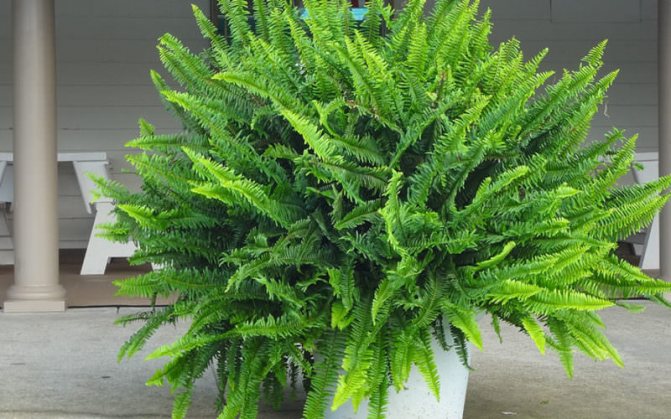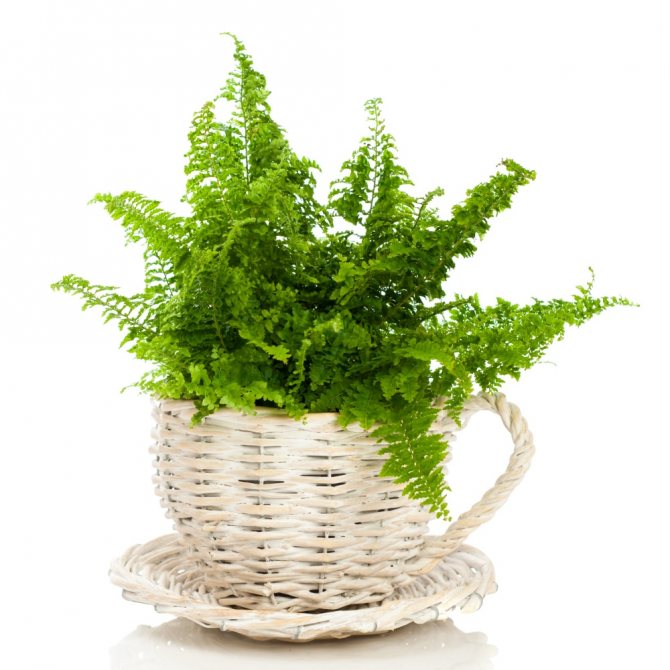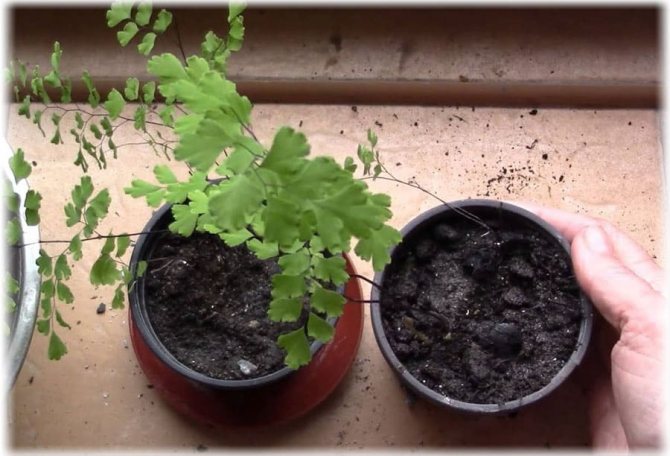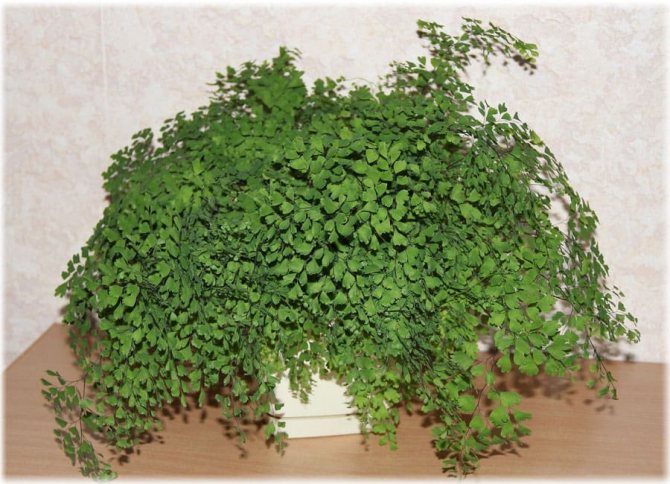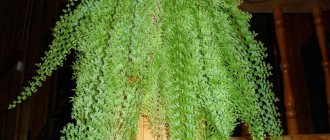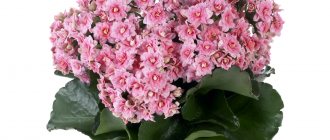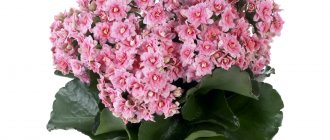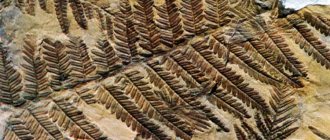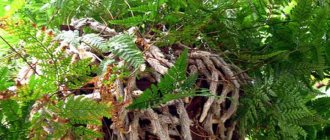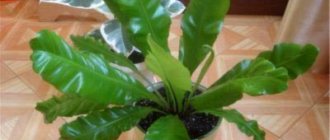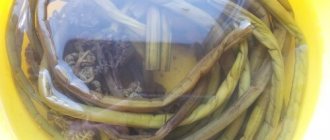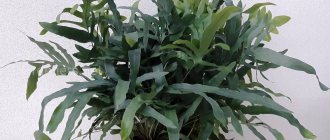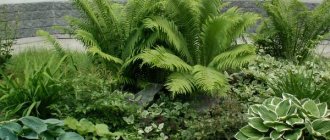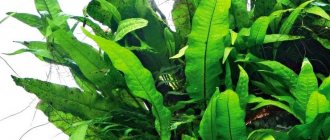The fern flower has been known since ancient times. This is one of the most ancient plants that has lived in forests since the days of the dinosaurs. The fern family includes several hundred species of plants, which are represented by short and tall specimens with various leaf shapes.
Ferns are quite unpretentious, and in their natural environment they live in forests, meadows and swamps, and some in trees. This plant is so common that it has long been domesticated. Indoor ferns are very popular with many gardeners. First of all, they are appreciated for their beautiful pinnately dissected leaves. Thanks to the presence of several of these plants in a flower garden or apartment, you can arrange a real jungle.
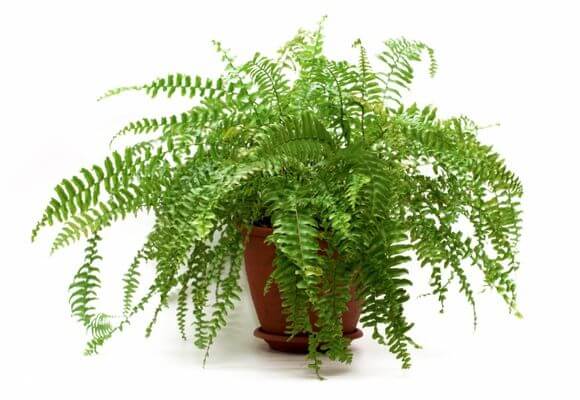
The homeland of the fern is the tropical regions of our planet, since the plant is older, it is not possible to establish where exactly they first appeared. Most fern species belong to herbaceous plants, the root of which is a rhizome, and the leaf has a complex dissected shape. Ferns never bloom, although everyone probably knows the legend about it.
Several signs are associated with them, one of them is about the holiday of Ivan Kupala that if you find a fern flower, then a person will receive incredible abilities. Nobody has seen its flower yet, but the plant itself is widely used in interior and office design, as well as for growing in botanical gardens and home flower gardens and greenhouses.


Appearance and places of growth
The size of ferns in natural conditions varies from a small herbaceous to a giant treelike plant, depending on whether it is a rare species or common and to which it belongs.
What is usually perceived as a leaf by description is actually called a flat branch, which consists of many branches located in one plane. Hence the name. At the same time, the plant has a leaf blade, which in appearance does not differ from a real leaf.
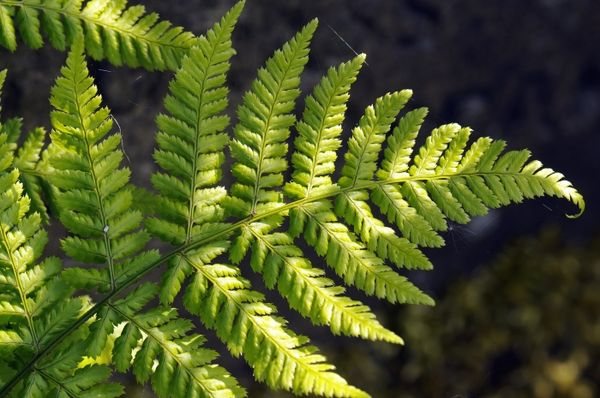

Fern leaf appearance
The variety of forms and types of plants, the ability to adapt to almost any conditions caused its widespread distribution.
- Varieties that are resistant to waterlogging settle on river banks, at the bottom of lakes, in wetlands.
- Epiphytes, unpretentious to moisture, take root in rock crevices and on tree trunks.
- Those who are resistant to winter frosts adapt to living in Siberia, northern countries, and are found even in the Arctic.
- In the temperate climatic zone, herbaceous representatives of the fern group are widespread.
It has long been believed that a fern flower endows its owner with clairvoyance, power over evil spirits, opens the way to untold riches.
But you can get unusual opportunities only by plucking a flower sprout and preserving it. However, in reality, the fern reproduces by spores, so even the most patient person cannot wait for flowering.


Fern reproduces only by spores
FUELS. VIEWS.
Of the whole variety of ferns, we note the most common domestic (indoor ferns), garden fern, forest fern, which is used as a remedy and aquarium fern.
Of the domestic ferns, the most common indoor flower is the adiantum. He comes from tropical America. There are several varieties of this plant. The most famous is the adiantum "hair venus" (A. capillus-veneris), which grows wild in Britain. The most unpretentious Ruddy maidenhair (A. raddianum), and the most beautiful is the gentle maidenhair (A. tenerum tarleyense). All these maidenhair have short, fragile black petioles, resembling a wire. The leaves are small, growing in rounded wedge-shaped segments.
Another common indoor fern is Nephrolepis. Homeland - tropical America. Nephrolepis has several varieties. This is a very beautiful, large fern. In indoor floriculture, nephrolepis (N. exaltata bostoniensis), which is bred in Boston (USA), is most often grown. The Boston fern has long, arcuate, drooping fronds, with beautiful wavy leaves. Another representative of this group of indoor ferns, nephrolepis sublime (N. exaltata), is distinguished by vertically growing vais, which droop down over time. Leaves are tough, light green.
If the leaves of nephrolepis look openwork, then the leaves of the Platycerium fern resemble the antlers of an elk. The homeland of this plant is tropical Australia and tropical Africa. Platycerium - epiphyte, has two types of leaves: some are located horizontally and closely adjoin the substrate. They are sterile and serve as a support for the fern, others are directed vertically - these are spore-bearing vai, they serve for reproduction.
The fern in the house can be used not only as an indoor flower, but also to decorate the aquarium. Most commonly, two types of aquarium ferns are used: the Indian water fern (Ceratopteris thalictroides) and the Thai or pterygoid fern (Microsorum pteropus). The height of the Indian fern is about 50 cm, the leaves are delicate, delicate, light green in color. Suitable for aquariums with a water temperature of at least +20 degrees.
Fern Thai or pterygoid (Microsorum pteropus), has bright green, long leaves. It grows well in aquariums with a water temperature of at least + 24-26 degrees, with sufficient lighting.
All ferns love high humidity, but there is one fern that thrives in dry air - the pellei fern (Pellaea).
As a garden fern, the forest fern is most often used, which grows in our climatic zone in spruce and spruce-small-leaved forests, in oak forests and in shrub spruce forests. Loves damp places, deep shade, so in the garden these ferns feel good in damp places, under trees.
Among the numerous species of ferns, like the garden fern, the most common fern is the ostrich feather or the common ostrich (Matteucia struthiopteris) - this fern is beautiful. Its vai are light green in color, up to 1.5 meters long, sterile, vertically growing leaves, form a beautiful bunch, and spore-bearing leaves are shorter, located inside this bunch. The plant is not too picky, it grows both in the shade and in the sun, but it is demanding on soil moisture. Winter-hardy. In winter, sterile leaves die off, and spore-bearing leaves overwinter. In the spring, ripe spores spill out of them, which germinate and give life to new plants.
As a garden fern, such a type of forest fern as the cochid fern or the female fern (Athyrium filix femina Roth) is also grown; it grows in the forest zone of North America and Eurasia. The color of the female fern is light green, the leaves are openwork, strongly dissected, the base of the petioles is triangular. The root of the female fern tolerates winter well, and all the leaves die off. From spring and throughout the summer, new leaves grow, so the plant looks constantly green and fresh. Kochedzhnik can grow in one place for a long time, multiplying by spores that ripen on the back of the leaves.
Another inhabitant of the forests, which is often grown as a garden fern, is the male fern or male fern (Dryopteris filix mas).Very often in the forests it grows in tandem with a female fern, but it looks rougher, as befits a man. The color of the male fern is dark green. The leaf blade is oblong-elliptical in outline (unlike other species). The leaf petiole is densely covered with rusty-brown scales, swollen at the underground base. Sporangia on the underside of the leaf are collected in piles, which are covered with a kidney-shaped veil (the female fern has oblong vells).
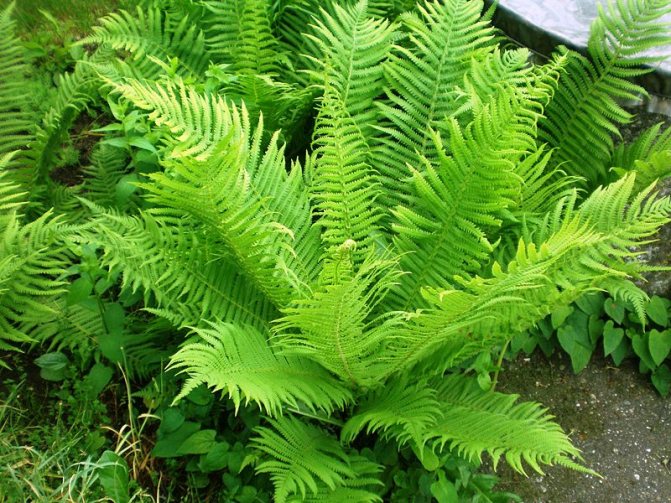

The leaves grow slowly, developing from primordia on the upper part of the rhizome, which in the second year of development take the form of a snail characteristic of ferns, and only in the third year a full-fledged leaf grows from the snail, on which spores mature. After that, in the fall, the leaf dies off, but the petiole remains on the rhizome. The root of the male fern is large, thick. The underground bases of the petioles have a cylindrical shape and are located on the rhizome like a tile with thin brown particles between them.
The rhizome of the thyme is used as an antihelminthic agent for tapeworms. The medicinal extract is prescribed in gelatin capsules of 0.5 grams. When treating a male fern, the recipe for use is as follows: the day before taking the drug, they follow a diet and take a saline laxative. The next day, within 30 minutes, give (adults) 2-8 grams. the drug and after 2 hours give again a saline laxative. If necessary, the treatment can be repeated after a week. The highest single dose of male fern extract for adults is 8 grams.
M.A. Nosal in his book "Medicinal Plants and Their Usage in the People" recommends the use of castor oil as a laxative, but not earlier and not later than 5 hours after taking the fern preparation, otherwise blindness may appear. As you can see, not everything is so simple. For any treatment, a doctor's consultation is required.
Much less often, the bracken fern (Pteridium aquilium) is grown as a garden fern, which is not at all uncommon in birch and coniferous forests, where it grows everywhere. Prefers light soils and light open areas. The bracken fern has a powerful root that grows horizontally in four directions. Due to this arrangement of the roots, the bracken grows easily and takes up all the free space. The leaves of the bracken are dense and tough, are located on strong, long stalks of triangular cross-section, have a peculiar smell. A characteristic feature of the bracken is the presence of nectaries, which secrete a sweetish liquid.
Due to the high starch content, water-insoluble glue is produced from the bracken rhizome. The fabrics impregnated with it do not allow moisture or air to pass through. In some countries, the ash from the roots of this fern is used as a soap. The roots and young leaves of the bracken are edible. They are salted, pickled, baked and used raw. In folk medicine, infusion of bracken is used to treat helminthic infestations, colds and rickets in children.
What are ferns - names and varieties
The variety of ferns, numbering more than 10 thousand species in the list, determines their widespread use. There are species adapted for growing at home and in an apartment, on the veranda of a house or in a country house.
Moisture-loving ferns pterygoid and Indian, small-leaved azolla and others are used to create aquarium compositions.
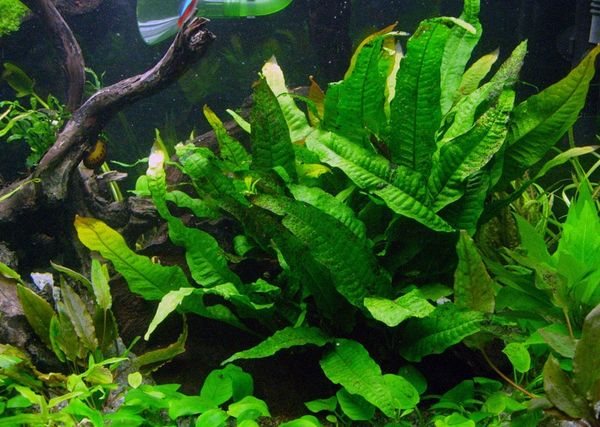

Pterygoid
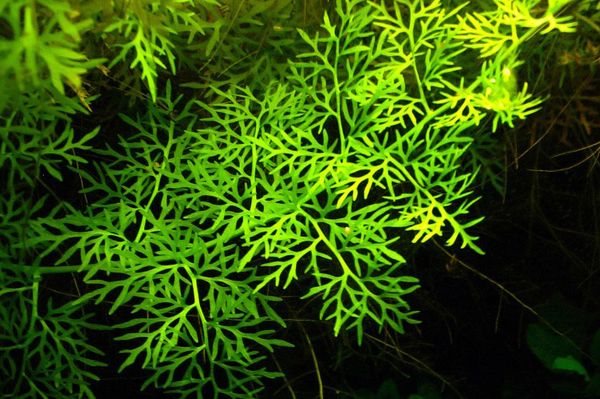

Indian


Azolla
Decorative leaves shieldworm, impressive size bracken, spectacular spreading maidenhair and many herbaceous varieties will successfully fit into the company of garden perennials.


Shieldworm
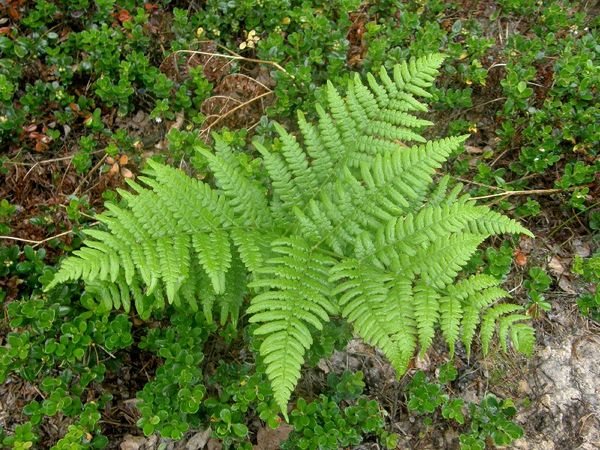

Bracken
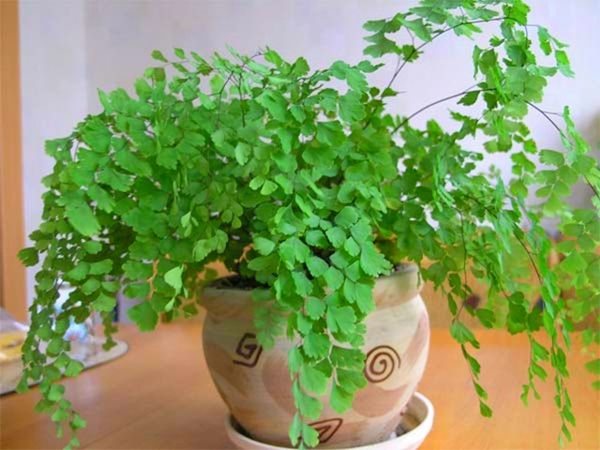

Maidenhair
Unpretentious nephrolepisfast growing davallia, not capricious asplenium and a huge number of people from forest zones and subtropics will help create a cozy atmosphere in the house.
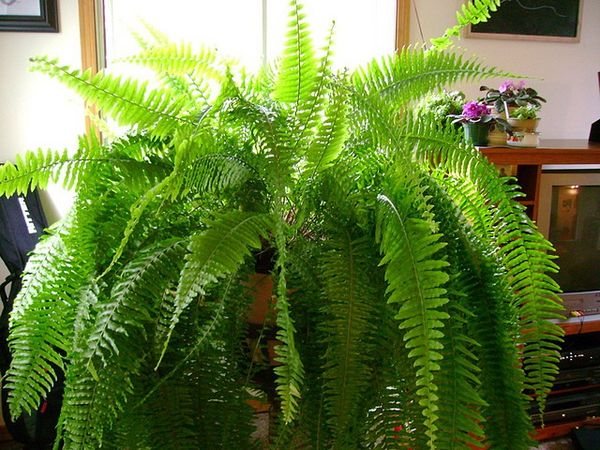

Nephrolepis
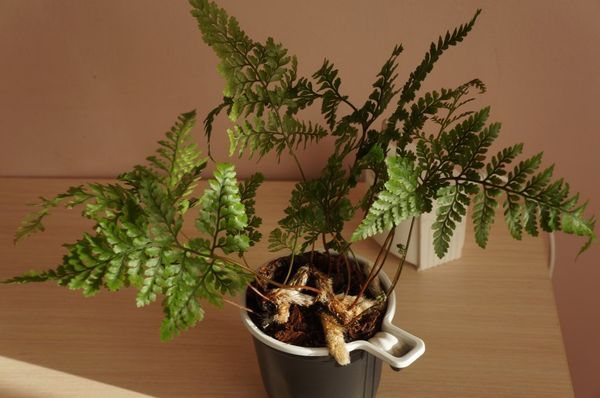

Davallia
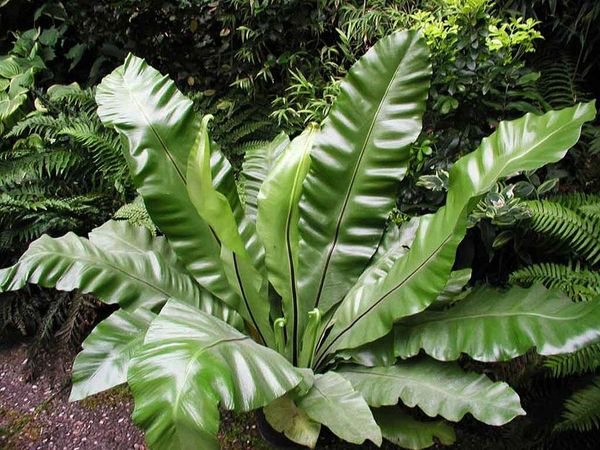

Asplenium
Place a pots with a flower next to the sleeping place strongly discouraged... At night, the plant actively absorbs oxygen, which can cause short or long morning headaches.
Diseases and pests
The most common diseases are:
- Browder foliage, the cause may be sudden changes in temperature or excessively moist soil.
- Scabbards or false scutes may also appear on the leaves. To destroy them, it is necessary to wipe the leaves with vegetable oil.
- The spider mite is one of the pests of the Adiantum. To combat it, the plant can be gently washed with soap, or treated with mineral oil.
- At high temperatures and humidity of 90% and above, the plant can be attacked by thrips insects. To combat them, you need to hang up blue sticky traps, and to treat them completely with insecticides.
Signs
The magical properties of the fern attract and alarming at the same time. There are many signs indicating both the positive effect of a flower on a person and its negative effect. Many people wonder whether it is good or bad, bad or good, and where the fern can be kept.
- With the advent of the fern, character traits such as irascibility and aggressiveness... The condition of people and energy in the house is stabilizing.
- The relationships of people with opposite temperaments are balanced. The family is developing a calm, harmonious atmosphere.
- A growing flower attracts good luck in business and material well-being. Protects the owner from unreasonable spending.
- The plant protects the house and its inhabitants from evil spirits, taking over all the negative.
- It is believed that the flower is an energy vampire that absorbs human energy.
Physical discomfort from close proximity to a fern can be associated with an allergic reaction to plant spores, and headaches can also occur.
FERNS.
Ferns are among the most ancient groups of higher seedless plants. There are about 300 genera of ferns, and about 10,000 species. These plants are distributed throughout the globe, found in various places. Many species of forest ferns grow in our climatic zone, but the greatest variety is observed among tropical ferns.
Many ferns are decorative, so the fern flower is quite popular among indoor plants. About 2000 species of these plants can be grown as house ferns.
Fern is a very interesting plant. There are herbaceous, tree-like, terrestrial and aquatic ferns. They grow in forests, meadows and swamps, but their greatest diversity is observed in tropical rainforests. It is from this group of plants that most of the domestic ferns originate. Some ferns, in our climatic zone these are winter-hardy species, are grown in the open field, like a garden fern.
Most forest ferns (classic ferns) have a rosette of pinnate leaves called vai. In many fern species, they are large pinnately dissected, but ferns are also found with whole leaf plates, both large and small, lanceolate and rounded. Vai grow from the top of the rhizome, which can be either long or very short. The fern leaf consists of a petiole, turning into a rachis (rod). Feathers (leaves) are located on the rachis. Vaya has the shape of a snail, which slowly unwinds as it grows. On the lower part of the leaf, most ferns have a sorus (a set of sporangia - reproductive organs in which spores form and mature), but there are also viviparous species.
In all countries where the fern grows, numerous signs and legends are associated with it. The fern was endowed (and is now endowed with) magical powers capable of taming evil forces, protecting the house from thunderstorms. The Slavs have one of the most beautiful legends associated with the fern. It is believed that the fern blooms only one night a year (on Ivan Kupala). Not everyone can see, let alone take possession of a fern flower, but if you are so lucky, the fern will indicate the place where the treasure is buried, and (if necessary) can make the owner of the fern flower invisible. While the fern is blooming, various miracles take place, it is a pity that no eyewitnesses have yet met who would have seen this flowering with their own eyes.
Fern legends haunt filmmakers. In 1974, a film shot in the USA - "Red Fern Flower" was released, the Russian film "While the Fern Blooms" is expected to be released.
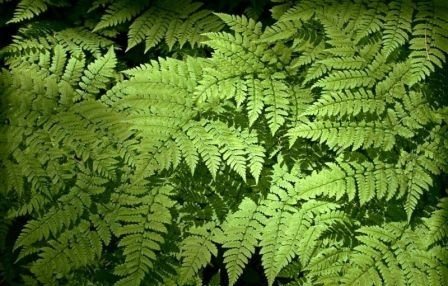

Some ferns are edible (for example, young shoots of cochinacea, one species of bracken fern). Fern salad is a popular dish in Korean and Chinese cuisine. For him, young shoots of dried and salted ferns are used.
Some ferns have medicinal properties (for example, male fern), but there are also poisonous species among them.
Indoor flower care
- Ferns grow well both in a slightly shaded area and in bright, but diffused lighting.
- Suitable temperature conditions 15 to 20 degrees... The cool temperature at night should not drop below 10 degrees. The daytime excess of 20 degrees will also seem uncomfortable to the plant.
- It is not recommended to allow the earthen coma to dry out and waterlogged.
- Should be supported increased air humidity through regular spraying.
- Young plants need an annual transplant, which is done in the spring. Mature plants should be planted in a new container when the roots fill the pot.
- During the growing season, one should not forget about regular feeding, which is carried out often, but little by little.
Growing a fern will not cause trouble for the grower, but behind it requires constant carewhich can be quite tricky. With the timely observance of the listed rules, the flower will delight the owner with rich greenery and will become an indispensable decoration of the interior, which can stand bright and green for a long time.
Basic care
The unpretentious lush flower of the house will delight you all year round. Some varieties require increased care. Indoor floriculture has more than two hundred groups.
Immediately after purchase
How to properly care for your home fern after purchase? Replace the soil immediately. In stores, they are planted in an enriched soil mixture to give a presentation. It is necessary to change the soil to a favorable one:
- acidity up to 5 pH;
- leafy land;
- humus;
- peat.
It is better to choose a clay or ceramic container for transplanting. Expanded clay can be used as drainage. The flower is carefully waddled with an earthen lump and the addition of the prepared mixture. No tamping of the top layer. Drizzle with settled water at room temperature.
Accommodation


The homeland of many species is tropical forests. There is a lot of shade and little sunshine. However, a place that is too dark is not suitable for the plant. It is necessary to choose well-lit, but not in direct sunlight. The western and eastern sides will be optimal.
Adults require adequate space. Large flowers will not fit on a window, you will need a floor stand. In spring and summer, the flower can be taken out on the terrace, balcony, gazebo. Minimize sun exposure beforehand.
The soil
Ferns prefer loose, ventilated soil with fallen, decayed foliage, needles, peat, slightly acidic. You can prepare the favorable composition of the soil yourself:
- sheet;
- sod;
- humus;
- peat;
- coarse sand.
Ready potting mix from a flower shop or prepared on your own should be loose and let the water pass well.
Temperature regime


Most indoor ferns are suitable for temperatures no higher than twenty-two degrees and not lower than fifteen. Some resistant varieties develop favorably at twelve degrees, and for thermophilic varieties it should not be lower than eighteen. Sudden temperature changes and drafts adversely affect them.
Watering and spraying
Fern is a moisture-loving plant that needs regular abundant watering. It is necessary to avoid stagnation of water, ensuring the drainage of excess moisture. Water with settled, melted, soft or boiled water at room temperature. Abundant moisture in a dried flower is detrimental to the root system. This will cause decay.
Regular spraying maintains moisture conditions and prevents pests. The procedure is best done in the morning. In the heat, you can repeat it two to three times.
Top dressing and fertilization
Needs regular application of mineral and organic fertilizers, especially for fast-growing representatives. Correct alternation of feeding: add minerals every two weeks, after the next fourteen days - organic.
The rest period starts at the end of October and ends in February. At this time, it is worth stopping feeding and reducing watering.
Transfer
Grow quickly, filling the pot with roots. Young specimens are transplanted annually in spring, mature ones - every two to three years:
- Choose a pot six centimeters wider than the previous one and the same amount higher.
- Lay out the drain with a top layer of moss.
- Move together with an earthen lump, after slightly sprinkling and removing dead parts.
- Add substrate.
- Do not deepen the root tip completely into the soil.
Possible problems
The appearance of brown dots seen on the underside of the leaf blades should not be of concern to indoor plant lovers, as indicates a natural process of sporulation.
However, there are signs to watch out for:
- brown shells, intermittently scattered over the leaves, appear as a result scabbard infestation;
- dry room air leads to yellowing of leaveswhose tips turn brown;
- from the high temperature of the air, the leaves become covered with brown spots and die off;
- from the bright sunlight, the leaf blades turn pale, traces of burns appear;
- lack of nutrition affects the growth of color saturation of the leaves.
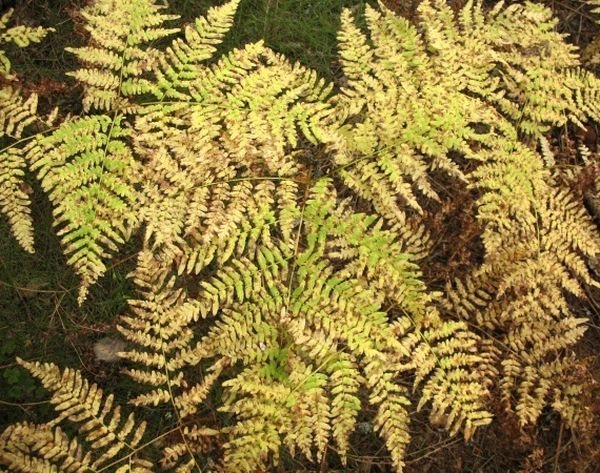

Leaves may dry out due to insufficient air humidity
Indoor fern - Pteris: photos and tips for home care
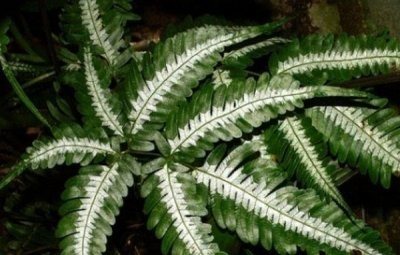

Pteris is a fern native to New Zealand, but it is also found in Japan and some states of the United States in the south.
Among all indoor ferns, this considered the easiest to care for and grow.
Pteris has more than 250 species, which differ in the shape of the leaves, contours, and also the color of the leaves.
Plant structure
Ferns are perennial herbaceous plants. They are very fond of moisture, therefore, they are most often found in forests or other shady, humid places. This is a huge group of spore plants, it includes 48 families.
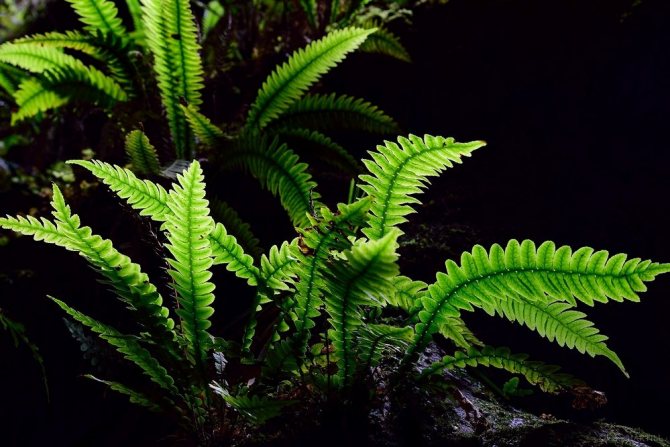

Fern
In the literature, you can often see that fern greens are called leaves. This is actually a mistake. The fern foliage is called vayami. A young frond grows up curled up like a snail. Perhaps, it was because of this structural feature that the legend about a mysterious flower once went.
The leaf plates of an adult plant are most often heavily dissected, growing from the rhizome itself.Ferns have many species, their names most often reflect the external resemblance of foliage to some object or are associated with the place of natural growth.
Ferns are different: tree-like, underwater, large and miniature, growing on the ground and in trees.
Beneficial features
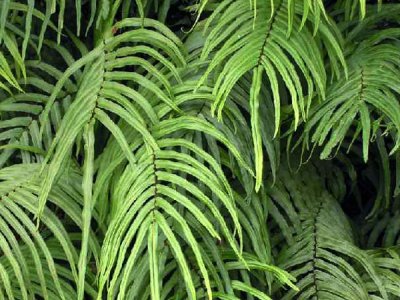

Fern properties are widely used in folk medicine.
Its decoctions are used for poisoning, infections of the genitourinary system, furunculosis and dysentery.
Pteris is a plant that won't be a hassle to grow.
And with proper care, its decorative appearance will always give the owner aesthetic pleasure.
selo.

